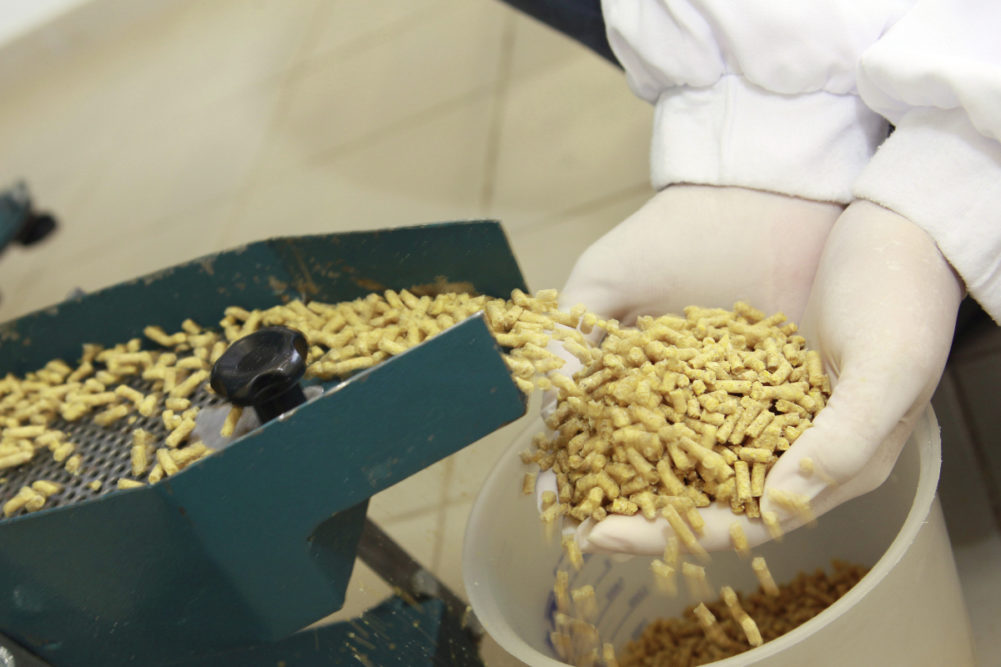ARLINGTON, VIRIGINIA, US — US feed manufacturers are having to reformulate diets as they face shortages of ethanol and rendering byproducts due to facility closings from the coronavirus (COVID-19) pandemic.
Distillers’ grains, a byproduct of ethanol production, and rendering byproducts are commonly used in feed formulation. About half of US ethanol production is idle as fuel consumption drops in light of stay-at-home measures and the oil glut persists. Several meat processing facilities have suspended operations after multiple employees tested positive for the virus.
“We’re seeing some effects from those byproducts, but it remains a localized supply chain issue, not widespread across the country,” Leah Wilkinson, vice president of public policy and education for the American Feed Industry Association (AFIA), told World Grain. “On the ethanol side, feed producers are used to that ebb and flow.”
Feed manufacturers are reformulating diets and finding other ingredients to fill in for the missing byproducts, she said. DDGS make up about 12.6% of total diet composition for all animal species, according to the 2016 US Animal Food Consumption Report. That amounted to 29.7 million tonnes of DDGS fed to animals in 2016. A total of 1.3 million tonnes of animal byproduct meals were fed to animals.
“There are no major gaps in what we’re providing,” she said. “Corn isn’t going to be making ethanol, so we can use the corn.”
Values on distillers’ grains really shot up when a large portion of ethanol started to idle capacity, Ryan LeGrand, president and chief executive officer of the US Grains Council (USGC) told World Grain. In its April 2 DDGS weekly market report, the USGC said prices were up $24 per tonne. Prices dropped in the following weeks as buyers filled near-term needs and “merchandisers/exporters assess what ethanol/DDGS production prospects will be over the coming months.”
Still, the week of April 16 was the third consecutive week that the DDGS/cash corn ratio reached a new record high. DDGS are priced at 185% of cash corn values, above the three-year average of 106%.
“The lack of availability really came through in the values. Some of that has settled a little bit in the last few days,” he said. “Availability will be an issue as long as we have large amounts of idled capacity.”
The DDGS likely will be replaced with corn and soybean meal.
“It’s just a tough situation for the ethanol industry and DDGS follow along with that,” he said. “There is lots and lots of concern there.”
The USGC has worked for years to encourage other nations to include DDGS in its feed formulas. LeGrand said customers are understanding of the situation, and USGC offices overseas are communicating via telephone and email to maintain those relationships.
“We’re working to make sure that those buyers come back to the market, when there is more availability,” he said. “International customers have a lot of faith in the US to produce and to distribute products efficiently and effectively. Those relationships are long term and will stay in place.”
With meat processing facilities closing, there’s also the possibility animal production will decline.
“If there’s not as many animals to feed, our industry will respond,” Wilkinson said. “We want to make sure our partners get the assistance they need to remain viable. That’s the backbone of our economy. That’s something that is important to all of us, especially to rural America.”
The AFIA has not been made aware of any member or any feed production facilities shutting down because of employees testing positive for COVID-19.
“It’s something that we are watching,” Wilkinson said. “We’re making sure our members have resources and procedures in place so that if they have any employees who test positive, they’re ready.”
Due to the way they operate, many facilities already had social distancing in place, but they have taken extra measures. These include split shifts, rotating shifts, letting employees who can work from home do so and eliminate face-to-face interaction with truck drivers making deliveries.
One of the primary concerns for the industry is ensuring the reliability of ingredients, Wilkinson said. Feed manufacturers are dependent on imported ingredients, such as vitamins, amino acids and some minerals.
“We’re making sure we have access to those ingredients on all fronts and that the systems we have in place for the supply chain are going to work,” she said.
While it was impossible to predict the early impacts of COVID-19, the feed industry tried to anticipate as much as it could, Wilkinson said.
“Manufacturers made sure that the supplies they did have, especially China-based imported products, were being managed appropriately,” she said.
While some US ports closed for a couple hours or a day when employees tested positive, the closings have stopped as operators now have guidance in place on how to operate.
“Hopefully it remains that way,” Wilkinson said. “We’re able to get to the port, get materials off the ship, get it to truck or rail and get it to the facility. As long as we can keep that cycle going, we’re hopeful that things will continue to move smoothly.”
Follow our breaking news coverage of the coronavirus/COVID-19 situation.






